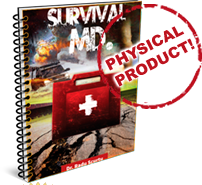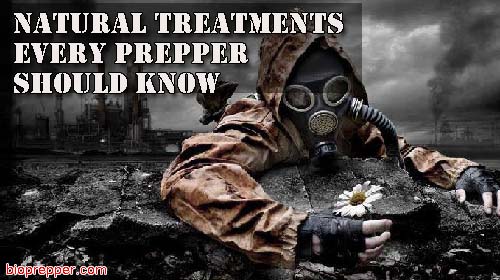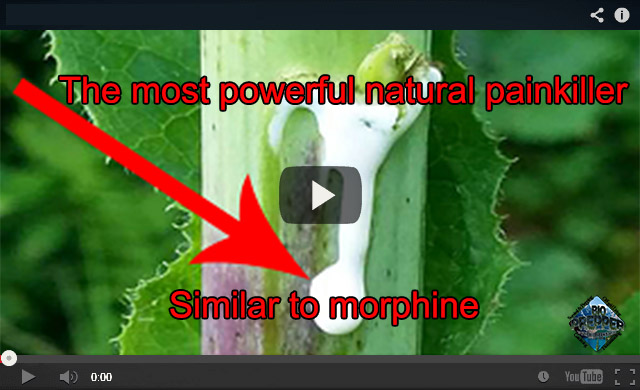You live in a world where so-called modern wonder drugs, laboratories, and equipment have obscured more “primitive” yet highly effective types of medicine involving determination, common sense, and a few simple treatments. This is something you need to always keep in mind when thinking about First Aid in survival situations. A well-stocked First Aid kit can only take you so far, and only last you so long.
When lost in the wilderness, or in the aftermath of a natural disaster where you could be cut off for days, months, years, or forever, for that matter — from the corner drugstore, let me remind you that I have been in combat in many parts of the world where people still depend on local Shamans or healers to cure their ailments.
Many of the herbal and botanical based treatments they use are as effective as the most “modern” drugs available. In fact, many modern pharmaceuticals you take for granted, owe their origins to the herbs and plants found in the rainforests. Here are several “natural” first aid treatments you need to get to know.
Antihaemorrhagecs for bleeding.
You can make medications to stop bleeding from plantain leaves, or, most effectively, from the leaves of the common yarrow or woundwort (Achillea millefolium). These mostly give a physical barrier to the bleeding. Prickly pear (the raw, peeled part) or witch hazel can be applied to wounds. Both are good for their astringent properties (they shrink blood vessels).
For bleeding gums or mouth sores, sweet gum can be chewed or used as a toothpick. This provides some chemical and antiseptic properties as well.
Antiseptics to clean infections.
Use antiseptics to cleanse wounds, snakebites, sores, or rashes. You can make antiseptics from the expressed juice of wild onion or garlic, the expressed juice from chickweed leaves, or the crushed leaves of dock.
You can also make antiseptics by boiling burdock root, mallow leaves or roots, or white oak bark (tannic acid). Prickly pear, slippery elm, yarrow, and sweet gum are all good antiseptics as well. All these medications are for external use only. Two of the best antiseptics are sugar and honey. Sugar should be applied to the wound until it becomes syrupy, then washed off and reapplied. Honey should be applied three times daily. Honey is by far the best of the antiseptics for open wounds and burns, with sugar being second.
Analgesics for aches, pains, and sprains.
Treat these conditions by making a warm compress of the crushed leaves of dock, plantain, chickweed, willow bark, garlic, or sorrel. Sweet gum has some analgesic (pain relief) properties. Chewing the willow bark or making a tea from it is the best for pain relief as it contains salicylic acid, the raw component of aspirin. You can also use salves made by mixing the expressed juices of these plants in animal fat or vegetable oils. To obtain the most powerful natural pain killer you have to make wild lettuce extract. Here’s a video on how to do it:
Insect Bites and Stings
You can relieve the itching and discomfort caused by insect bites in the field by applying:
- Cold compresses
- A cooling paste of mud and ashes
- Sap from dandelions
- Coconut meat
- Crushed cloves of garlic
- Onion
Tips and Takeaways
Here are a few other tricks of the trade.
- You can treat diarrhea by drinking a tea from the roots of blackberries. Tea made from cowberry, cranberry, or hazel leaves works too.
- You can reduce fever with a tea made from willow bark, elder berries, linden flower, or aspen or slippery elm bark.
- Tea made from mint leaves or passionflower leaves, has a sedative effect, it can help you, (or you kids) get some sleep in a tense survival situation.

I told you the basics you need in a First Aid Kit – but if one thing that pre-packaged kits never seem to have enough of is bandages. Remember the very idea of “first” aid is to just stabilize a person until you can get them to advanced medical treatment. That may not be for a long time in a survival situation, so you should have extra bandages.
Since space is always an issue, I recommend you get some hospital grade or mil. spec. trauma bandages, like BloodStopper, or TrauMedic, that can be boiled and reused if you have too.
I always have a few feminine sanitary “maxi pads” in my kit. They can be used as highly absorbent compresses for dealing with bleeding or seeping wounds. Avoid the kind that are scented, or “deodorizing.”
I have given you some tips that can help you survive injury or emergencies in the field, but getting yourself some real First Aid Training can be as important to your survival as learning Self Defense or spending time on a gun range.
If you found this article useful, please like our facebook page and stay up to date with the latest articles.
Remember, ‘’By failing to prepare, you are preparing to fail’’ – Benjamin Franklin
Stay safe,
James
OTHER USEFUL RESOURCES!
US Water Revolution (Generate Your Clean Water Anywhere)
Alive After The Fall (Key Survival Situation Procedures and Knowledge )
Mega Drought USA:(Discover The Amazing Device That Turns Air Into Water)-DIY
Survive The End Days (Biggest Cover Up Of Our President)
Survival MD (Best Post SHTF Medical Survival Guide Ever)
Blackout USA (EMP survival and preparedness guide)
Bullet Proof Home (A Prepper’s Guide in Safeguarding a Home )
Backyard Innovator (All Year Round Source Of Fresh Meat,Vegetables And Clean Drinking Water)-DIY
Conquering the coming collapse (Financial advice and preparedness )
Liberty Generator (Easy DIY to build your own off-grid free energy device)
Backyard Liberty (Easy and cheap DIY Aquaponic system to grow your organic and living food bank)
Family Self Defense (Best Self Defense Strategies For You And Your Family)
Sold Out After Crisis (Best 37 Items To Hoard For A Long Term Crisis)


